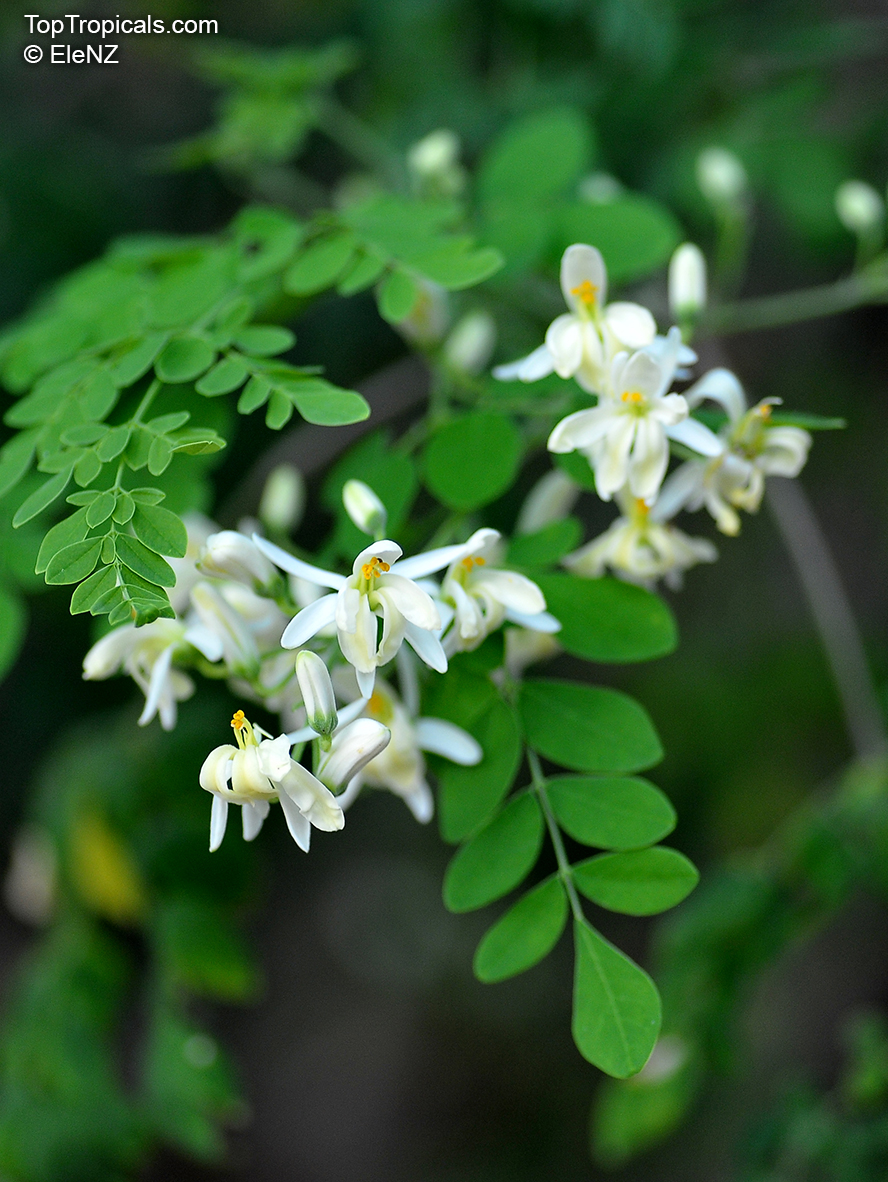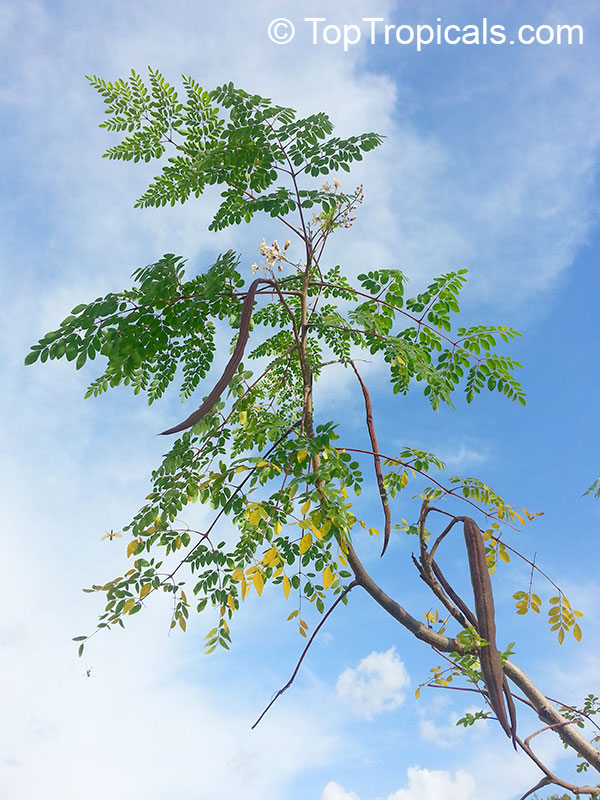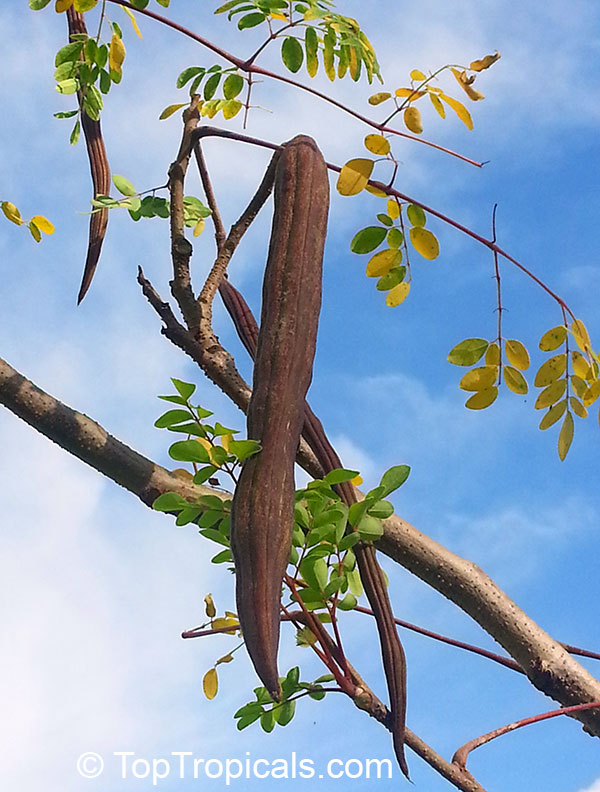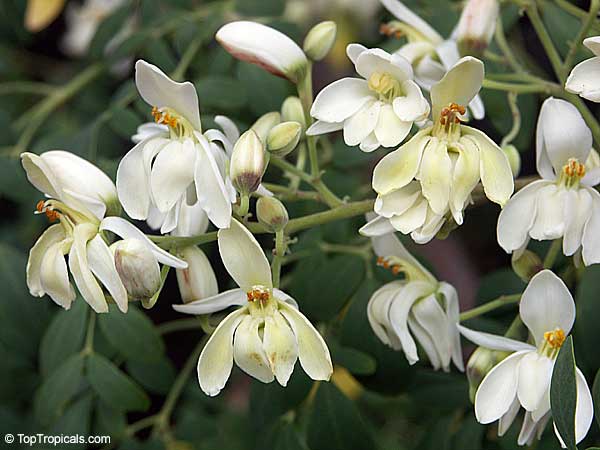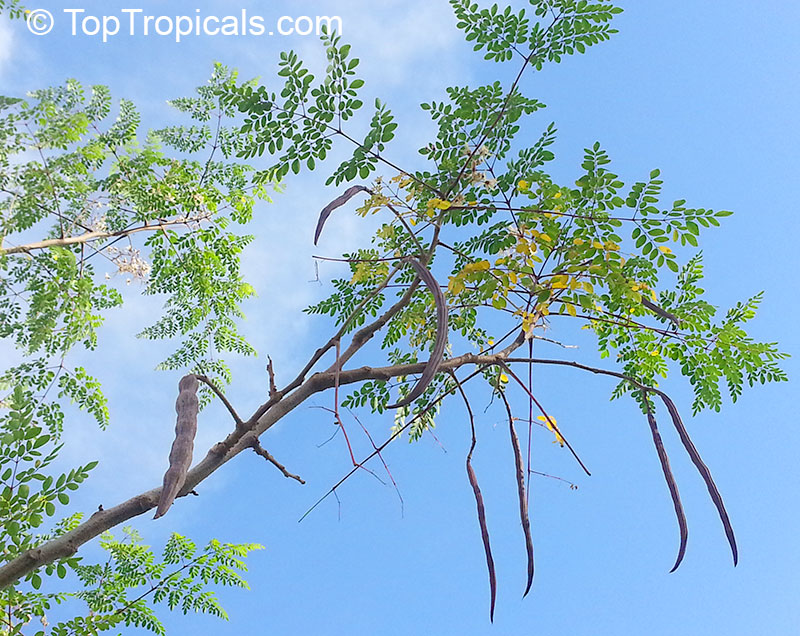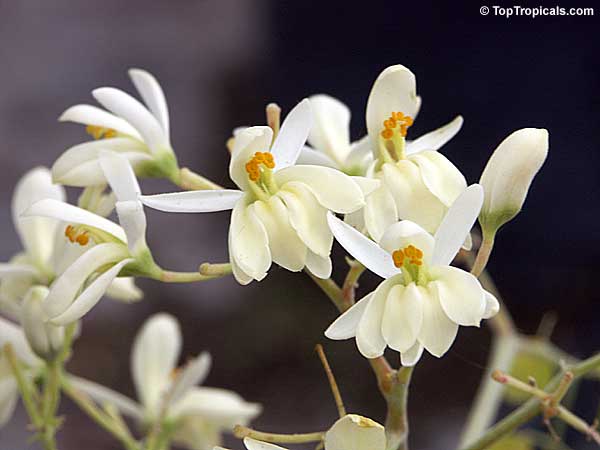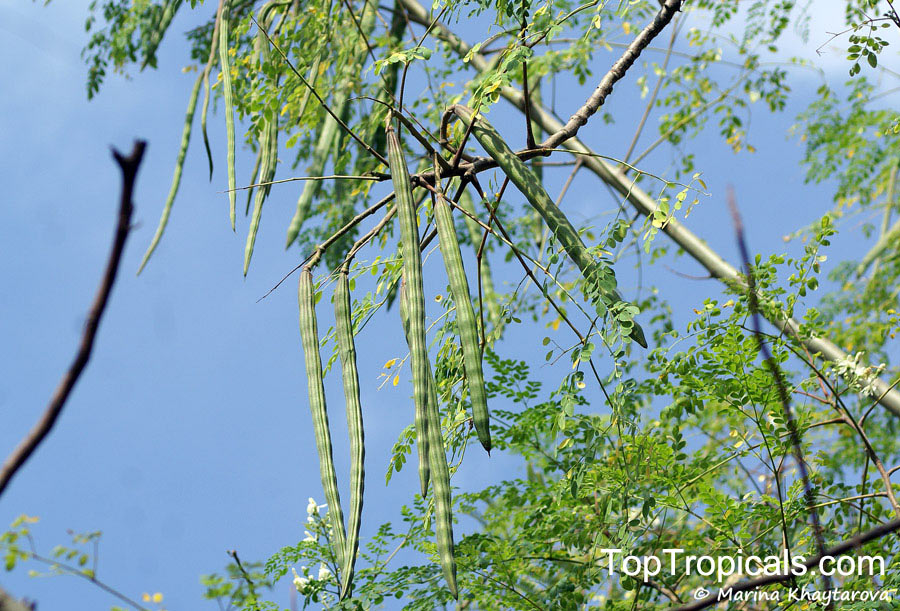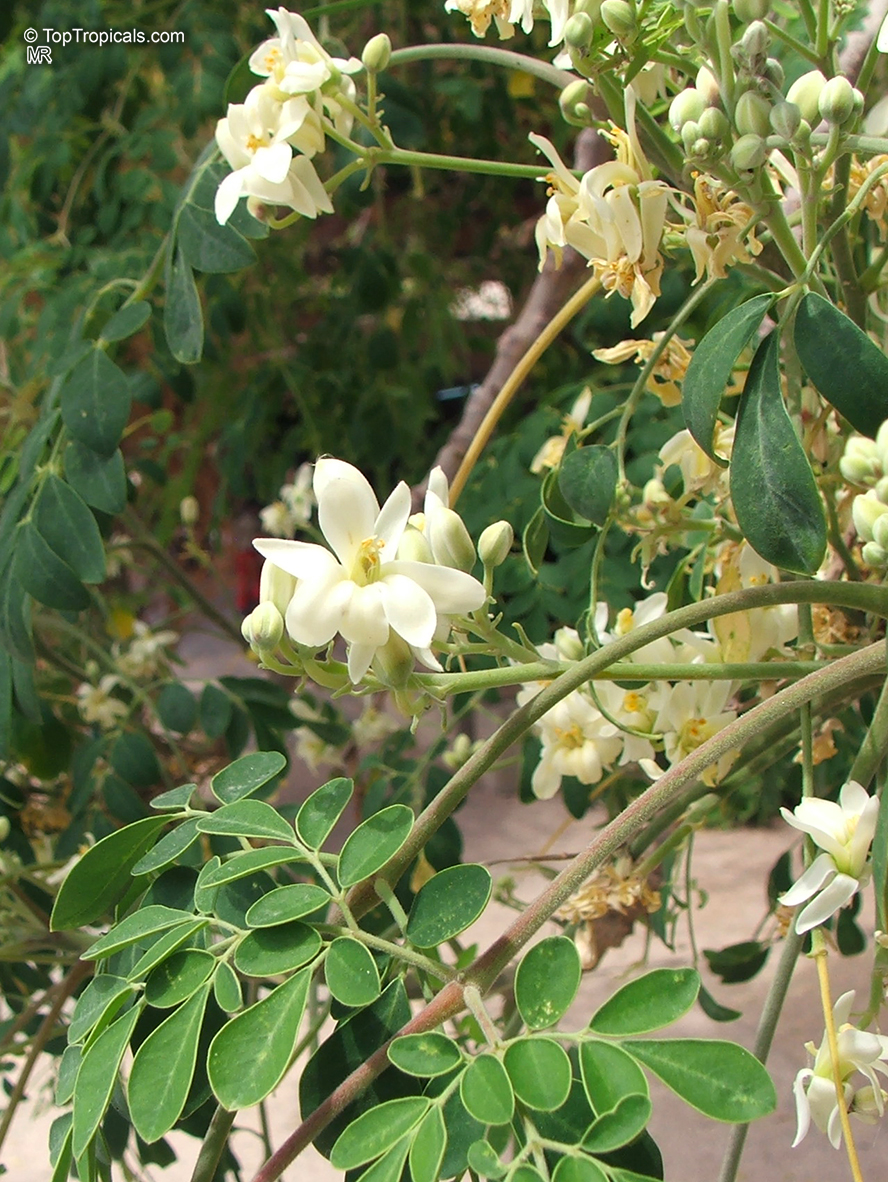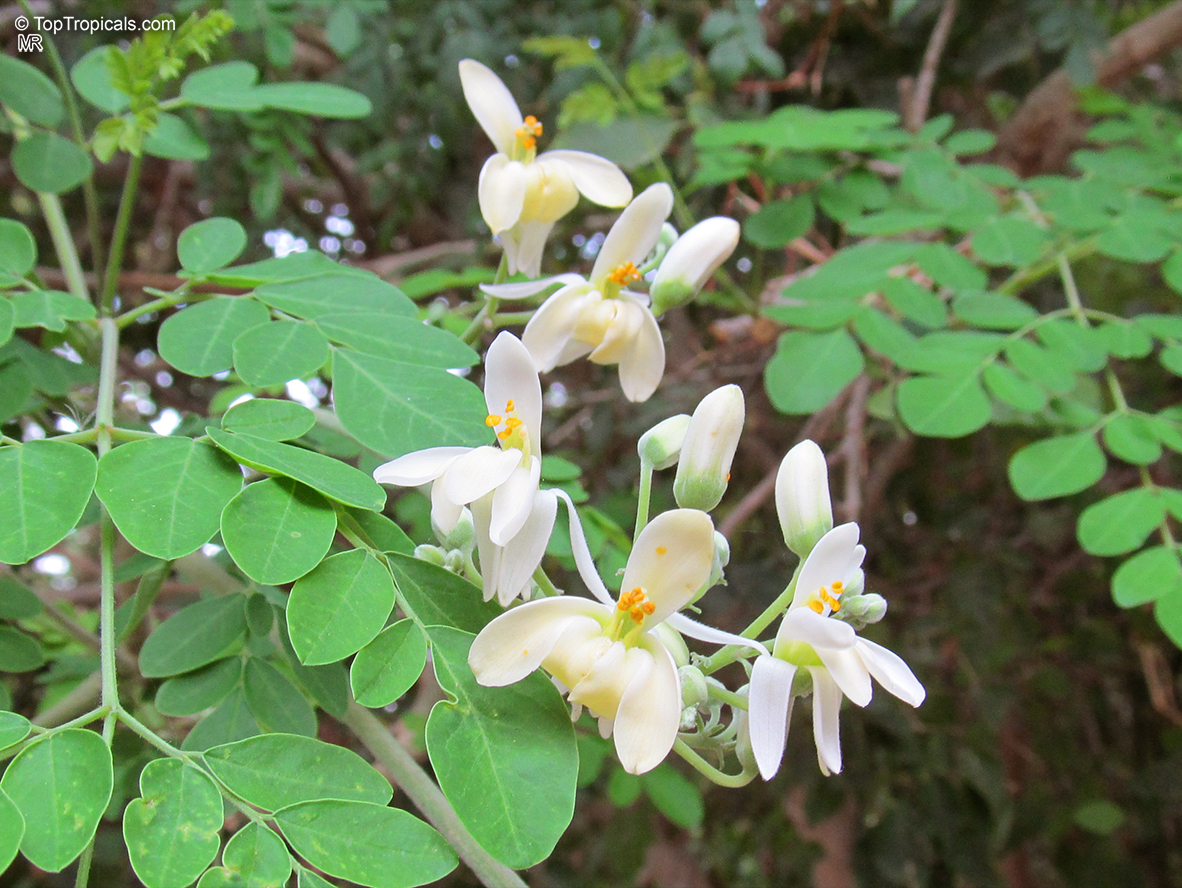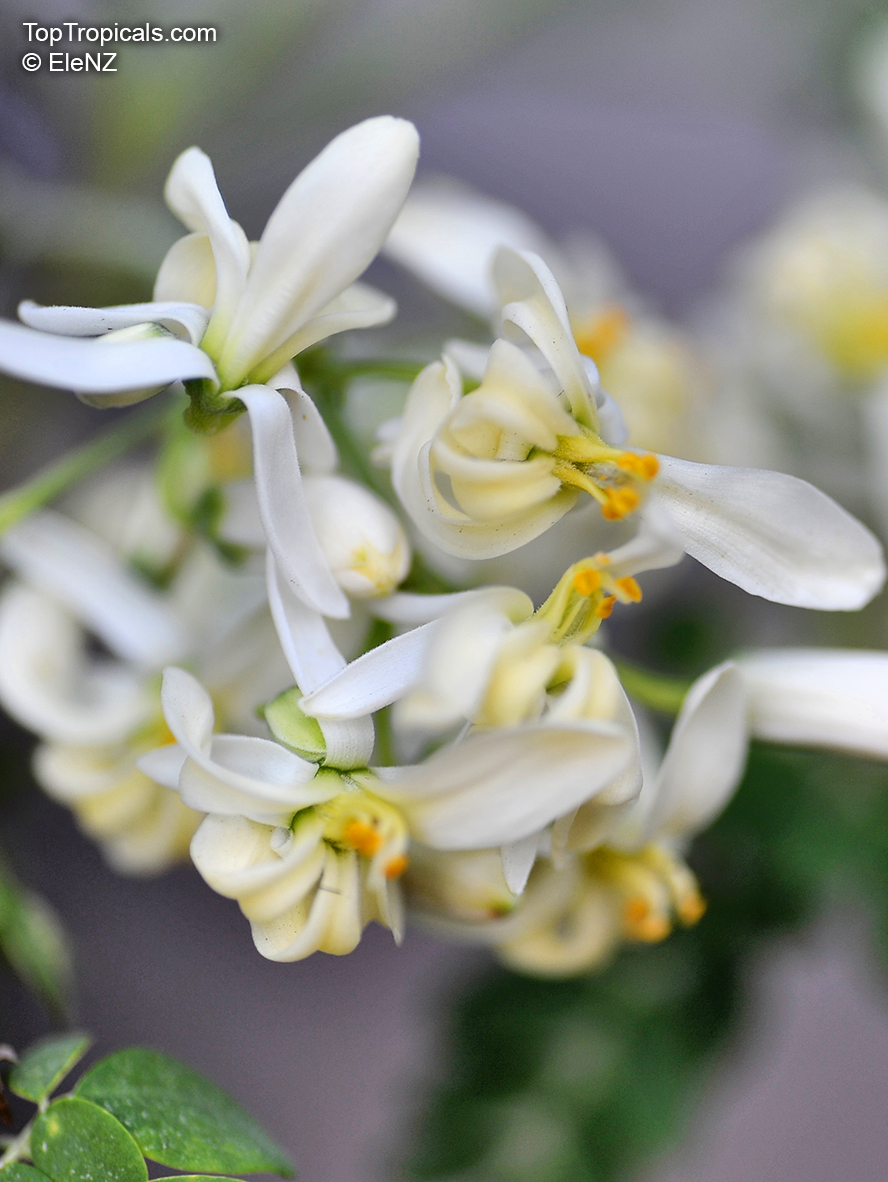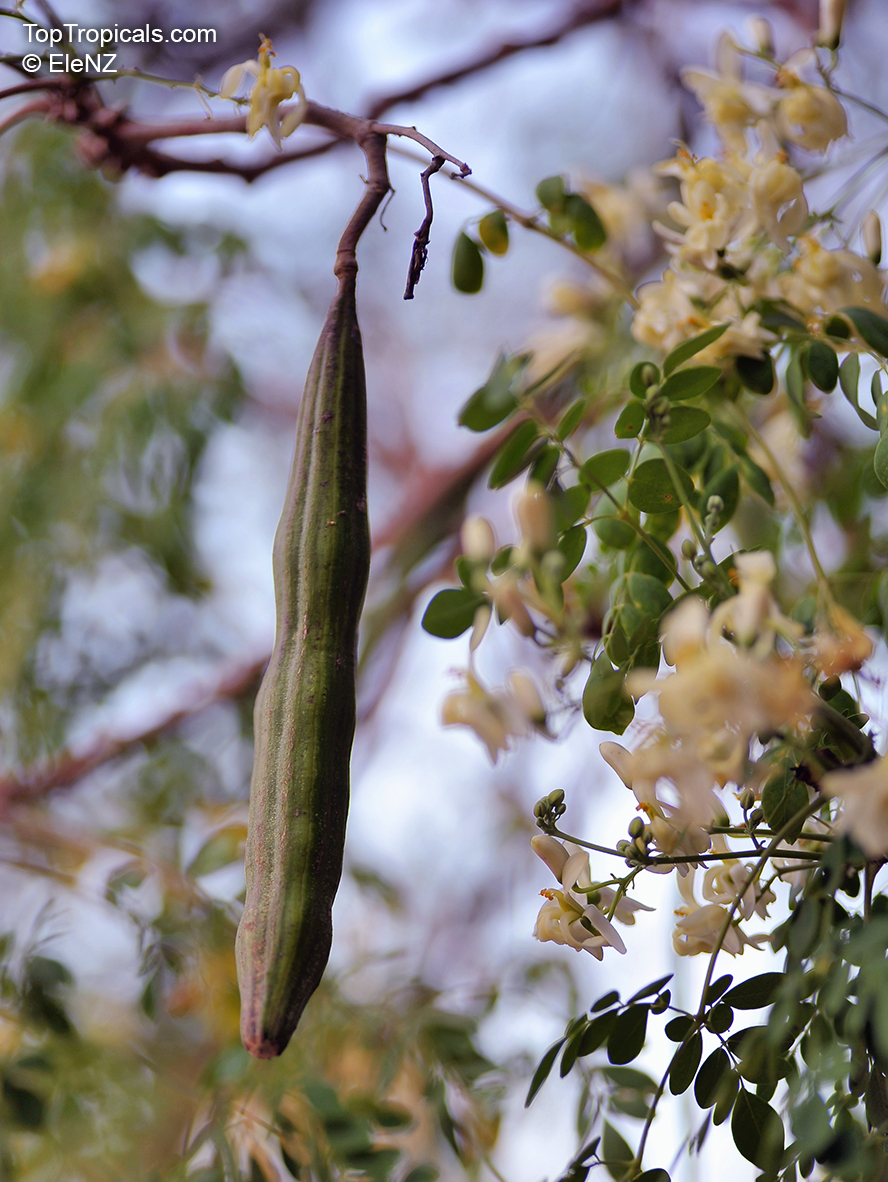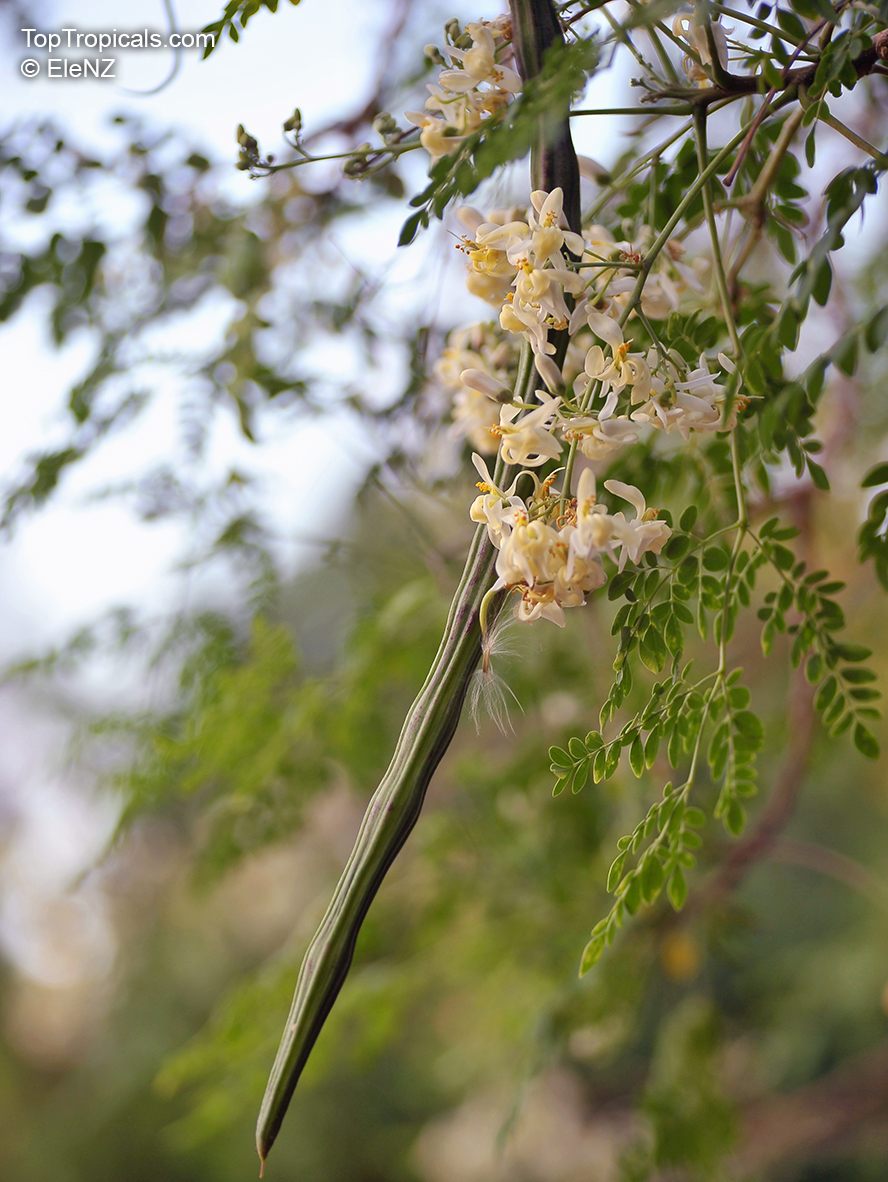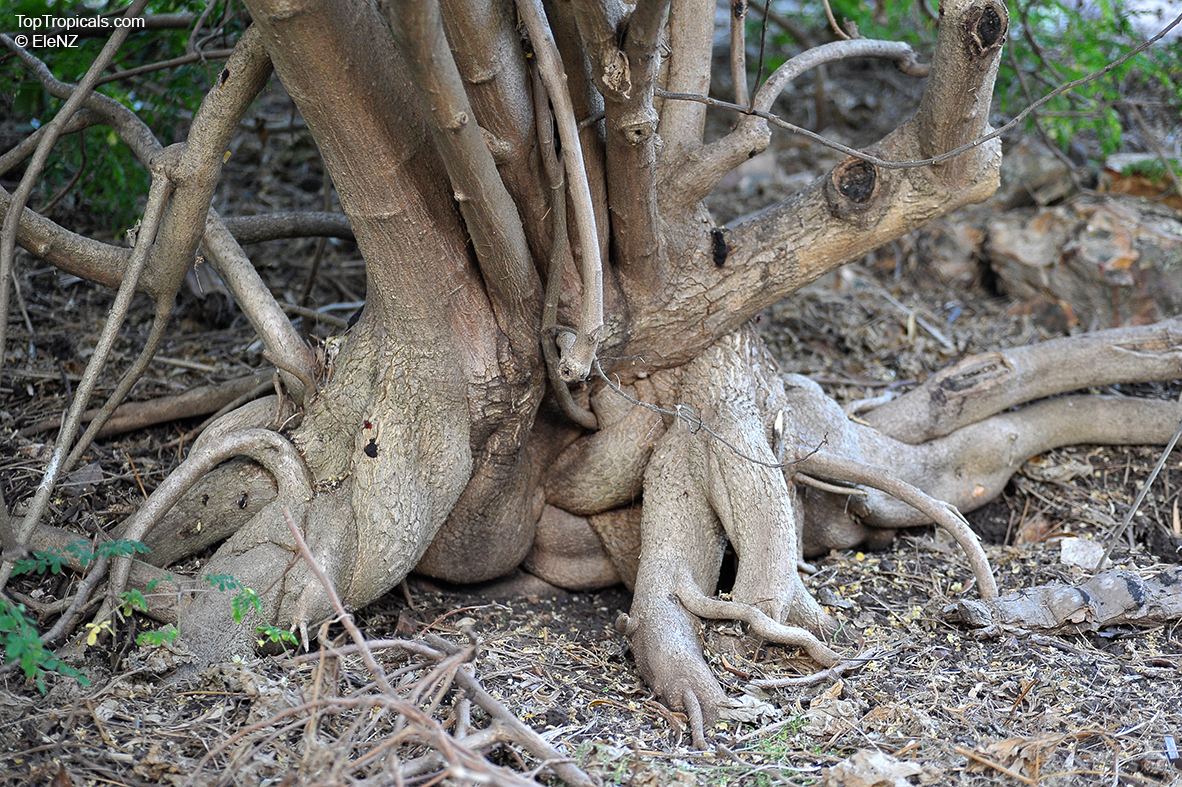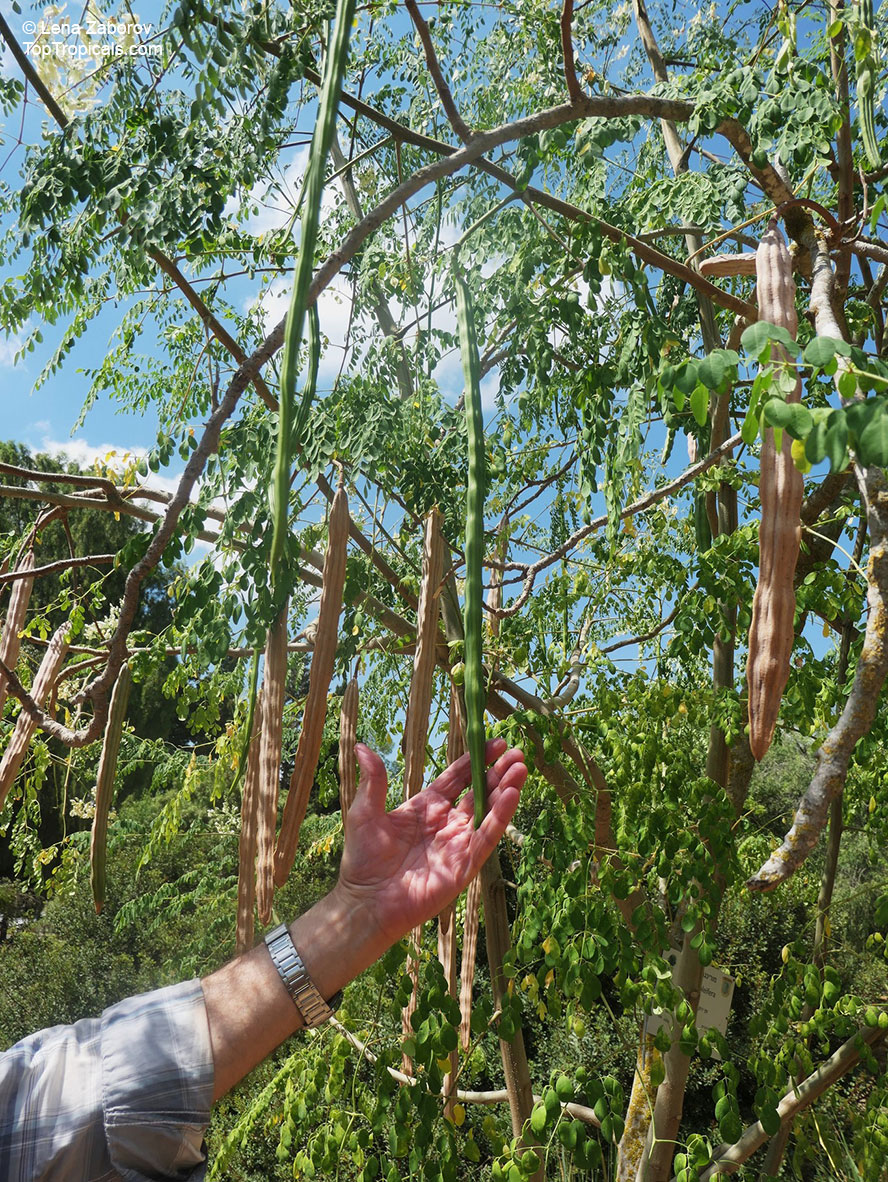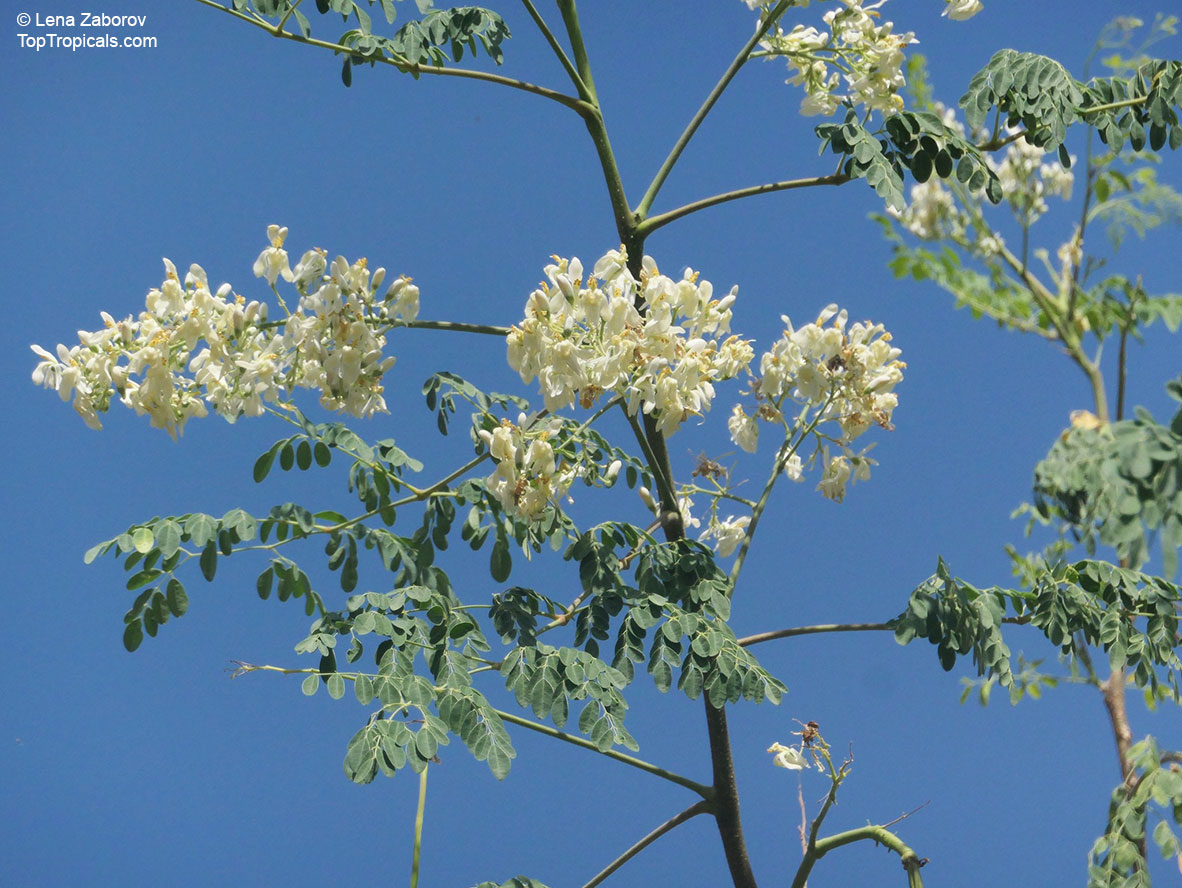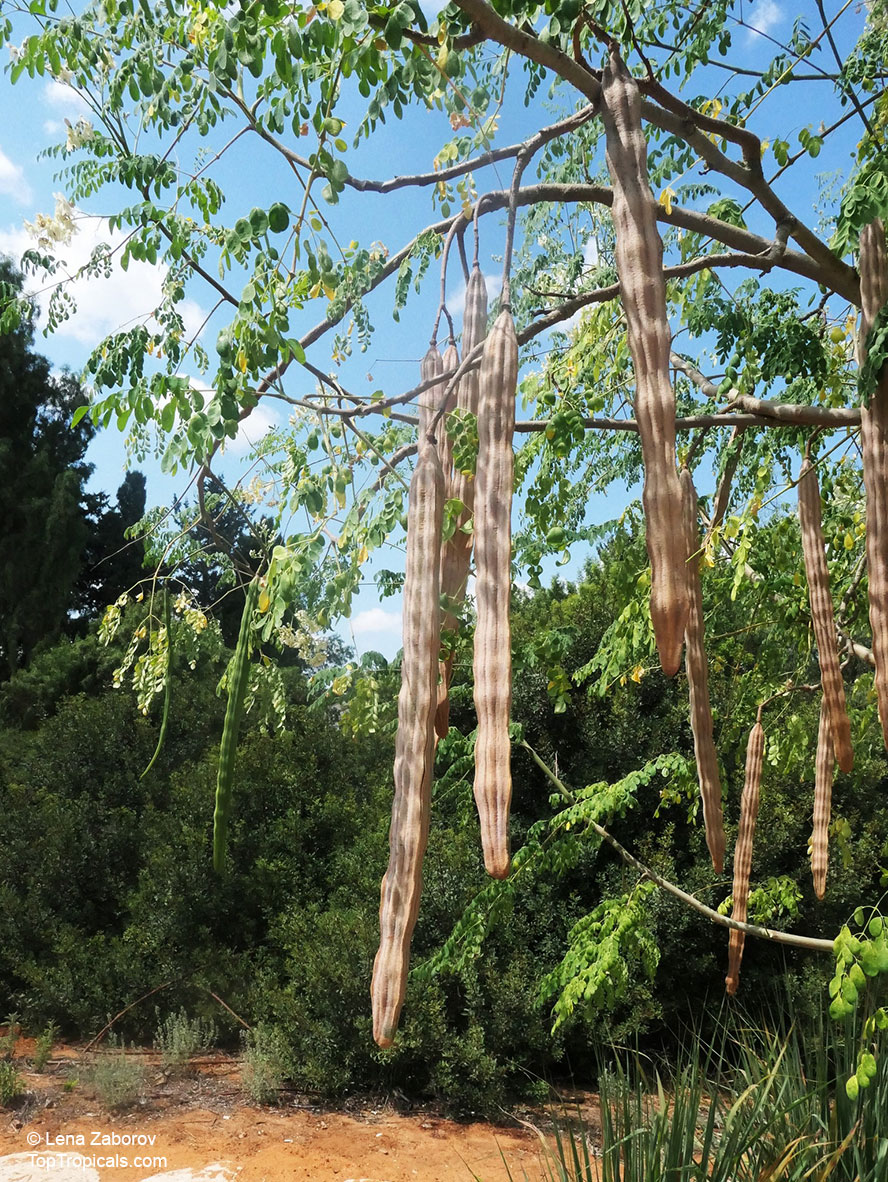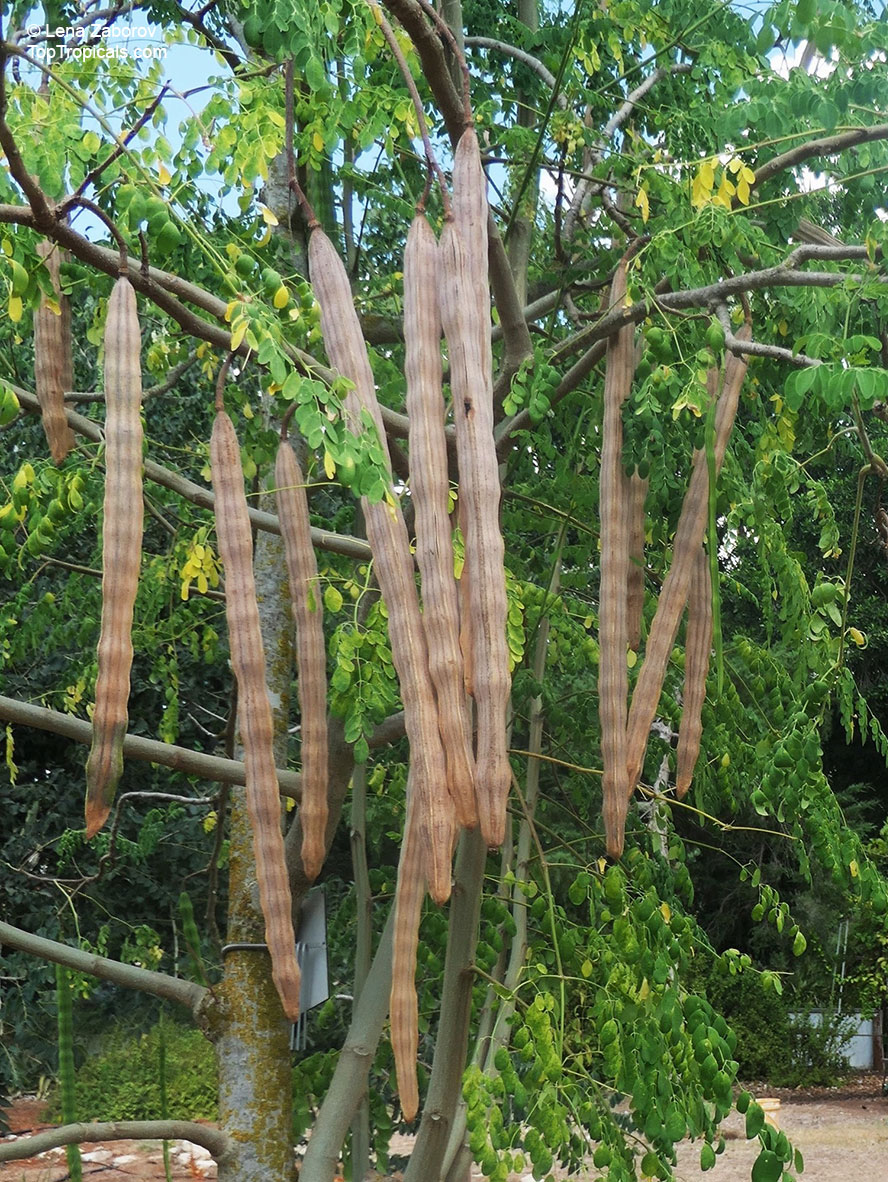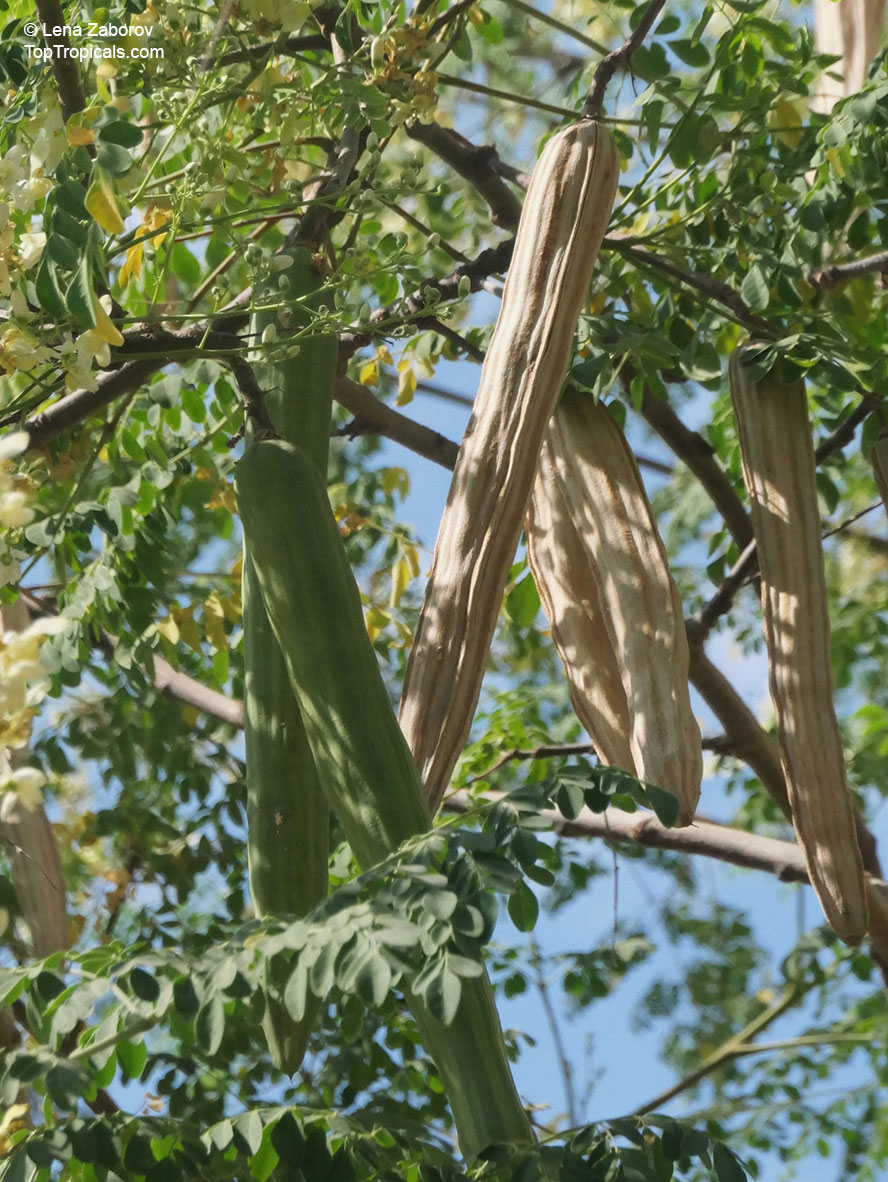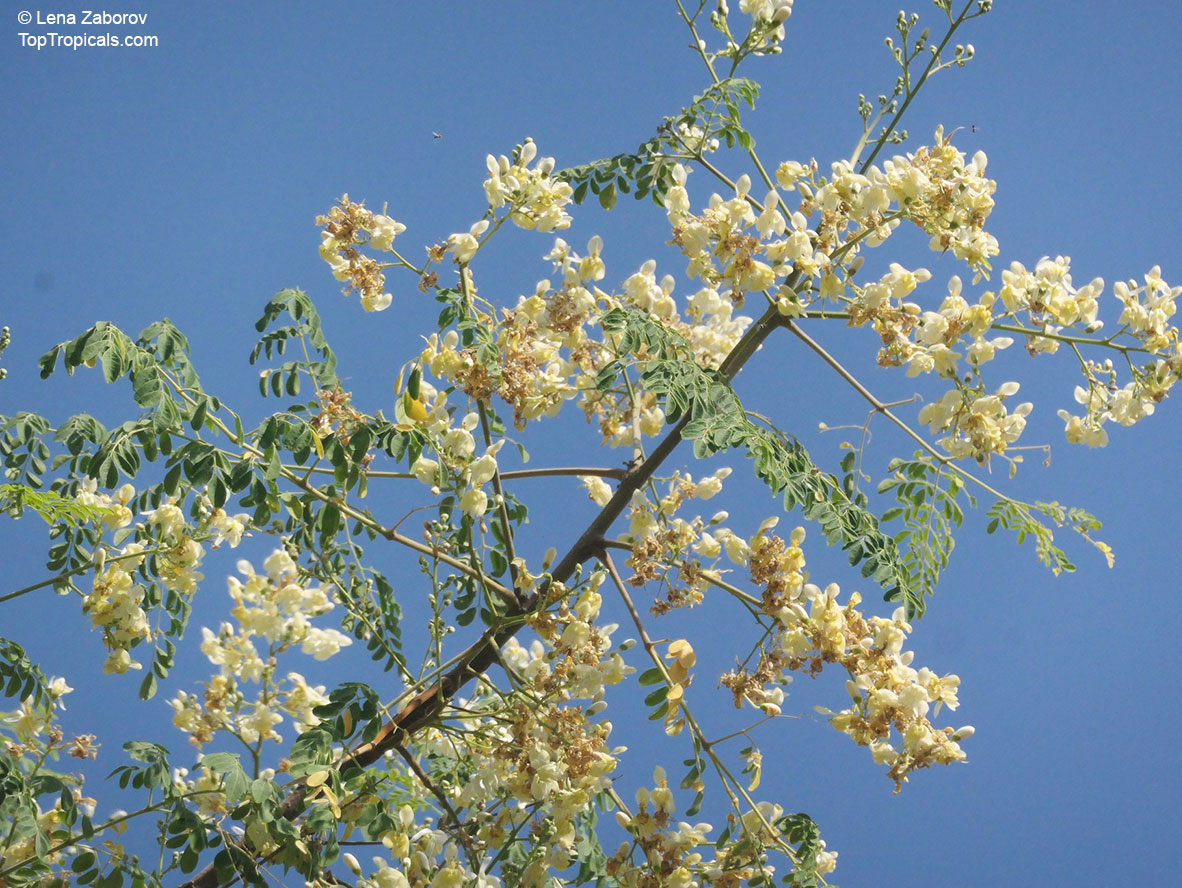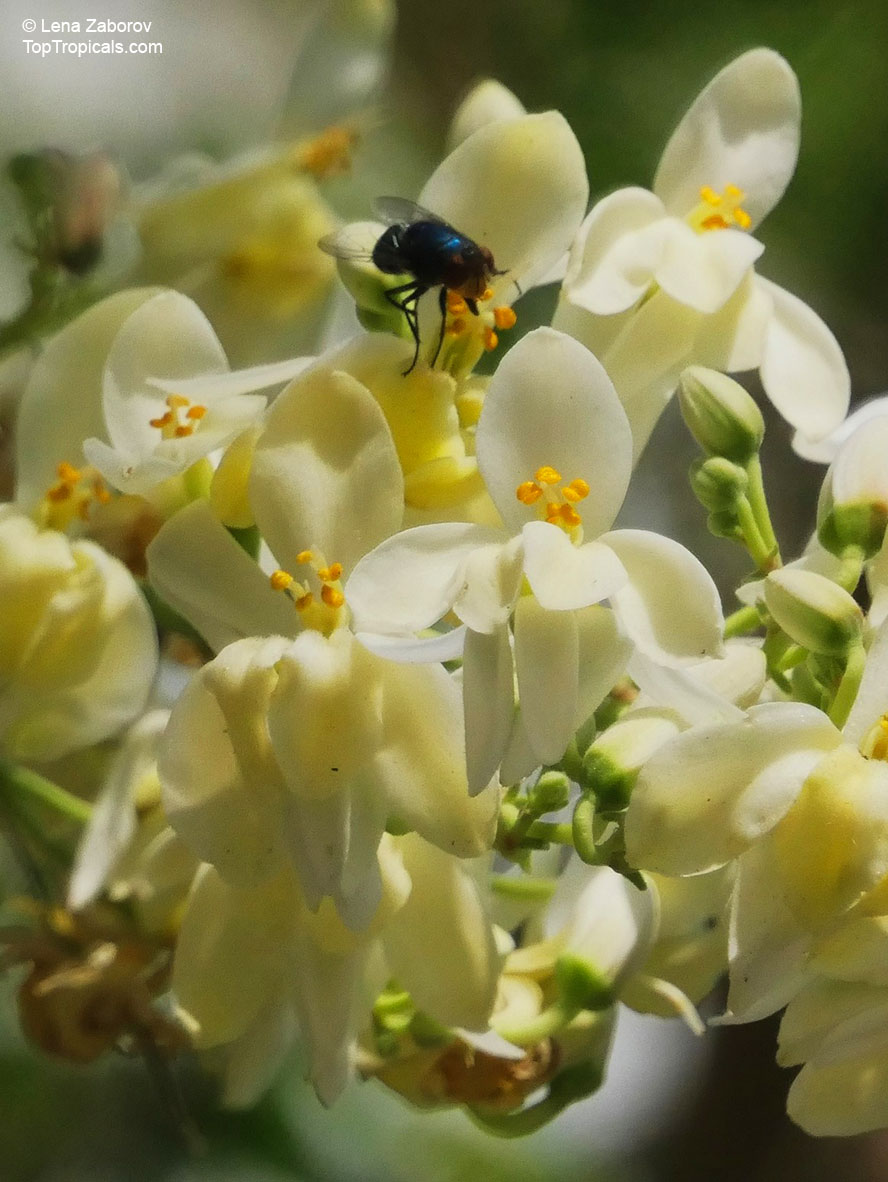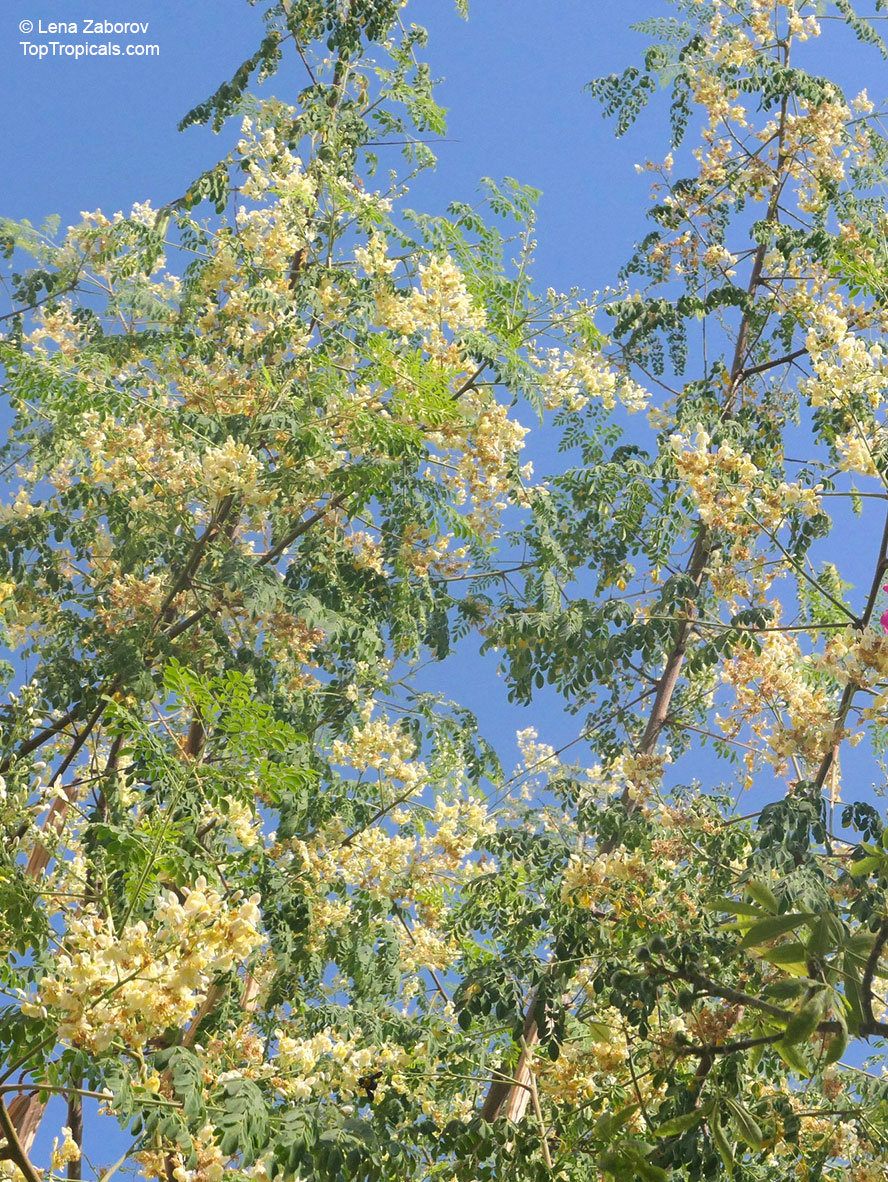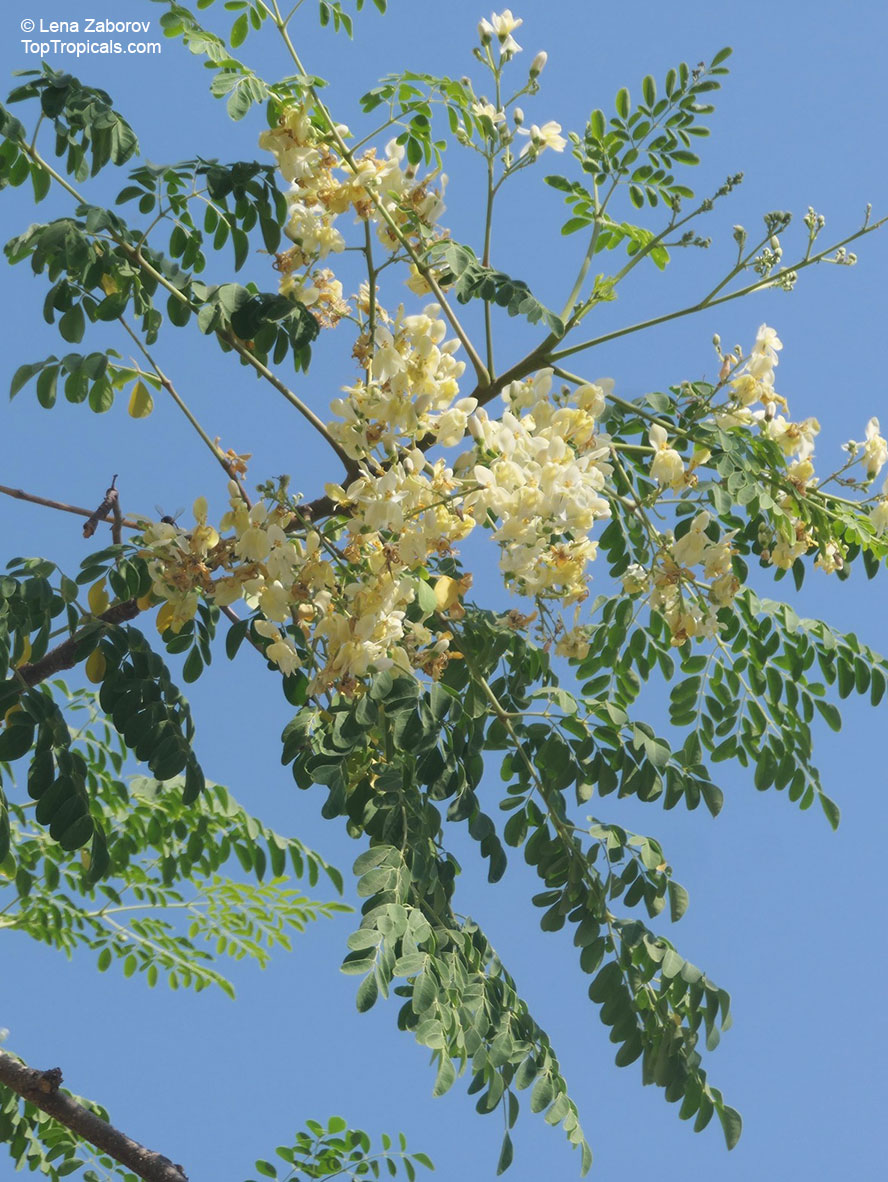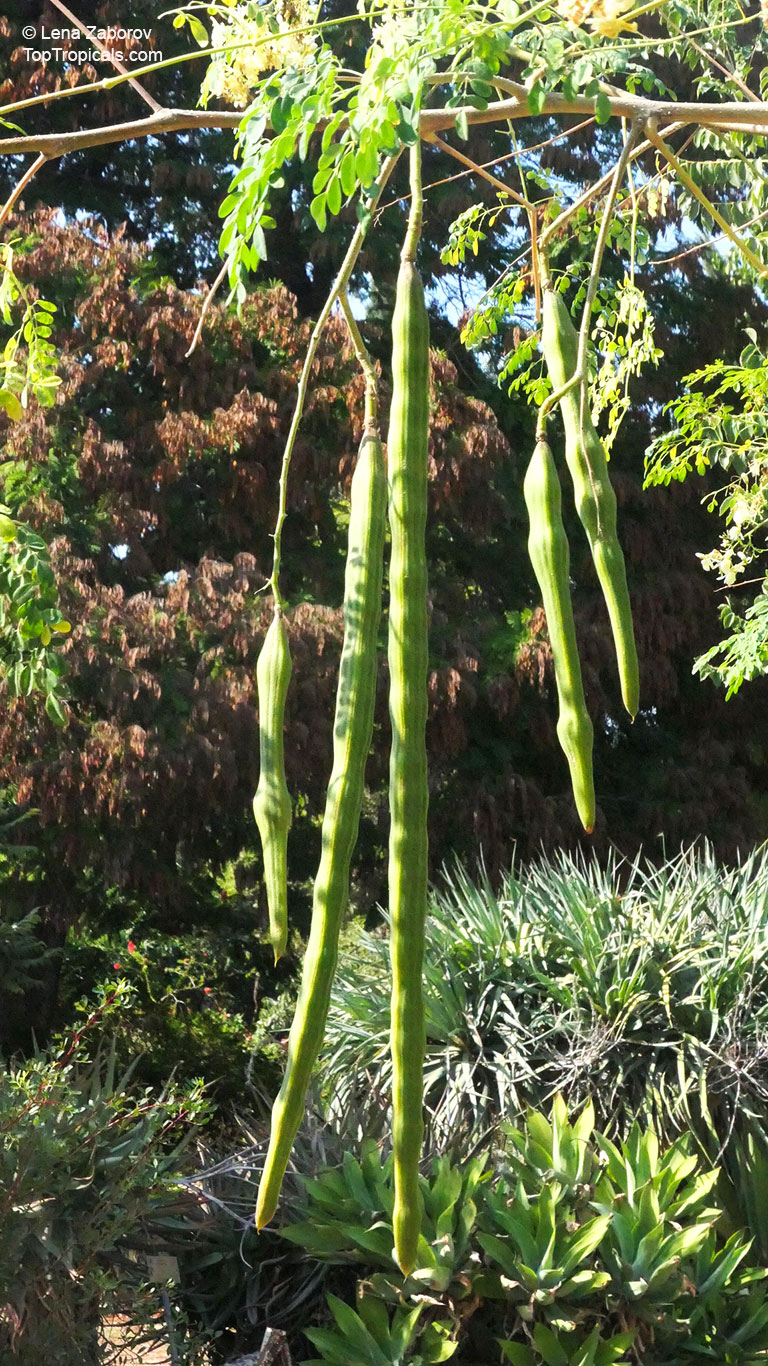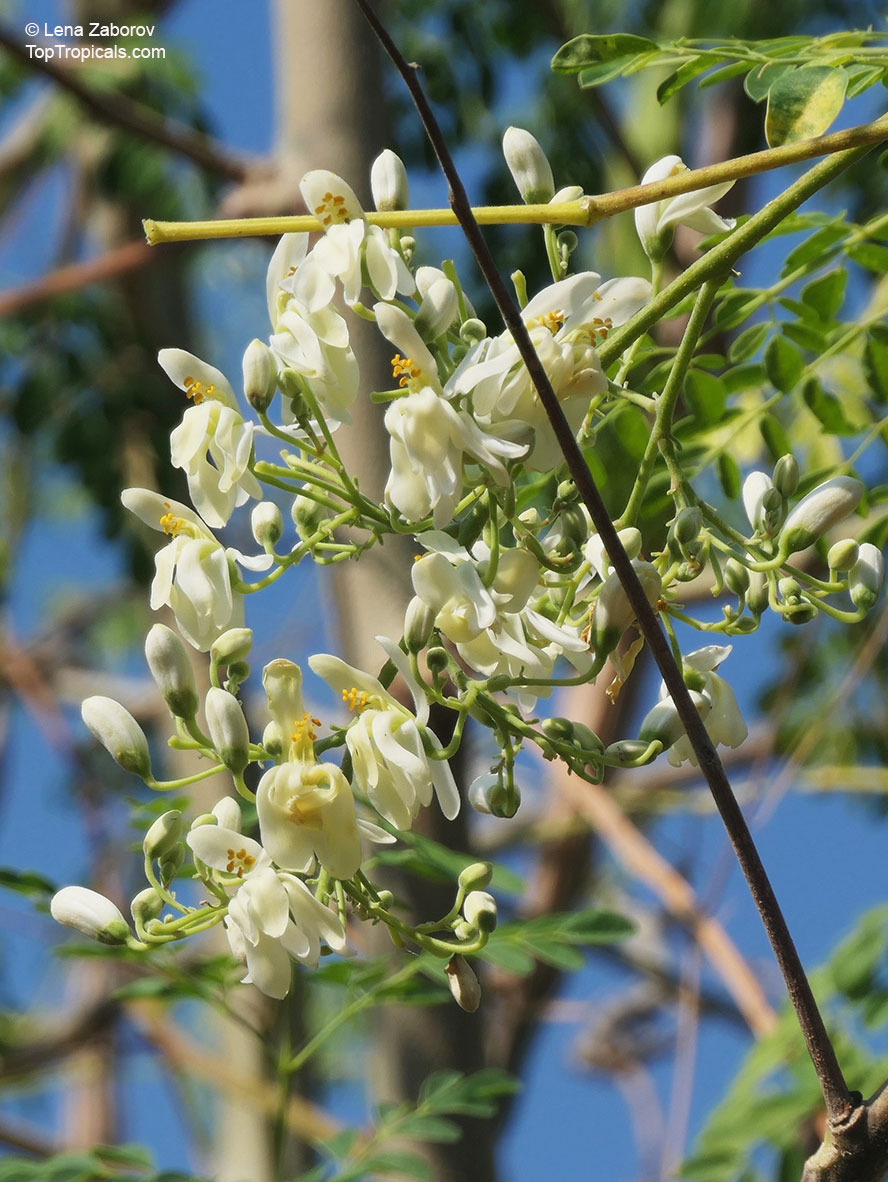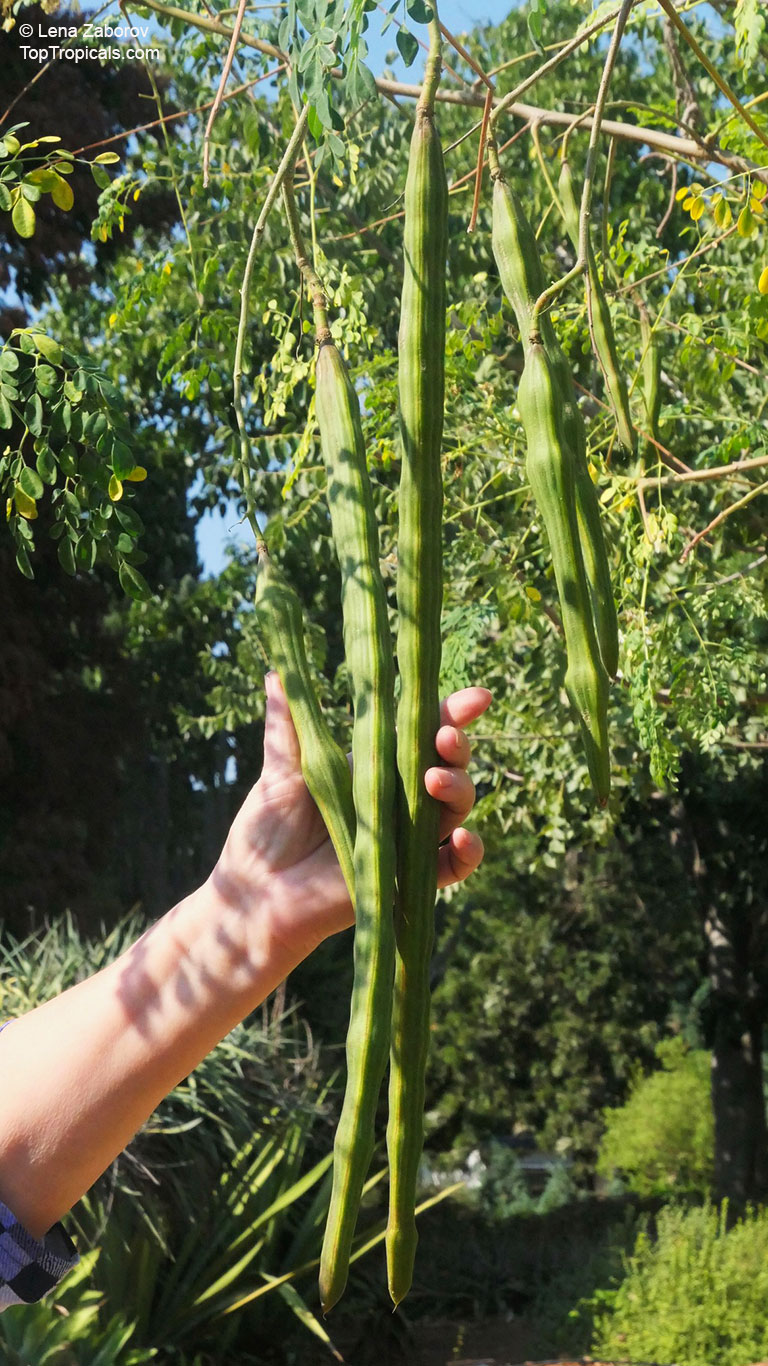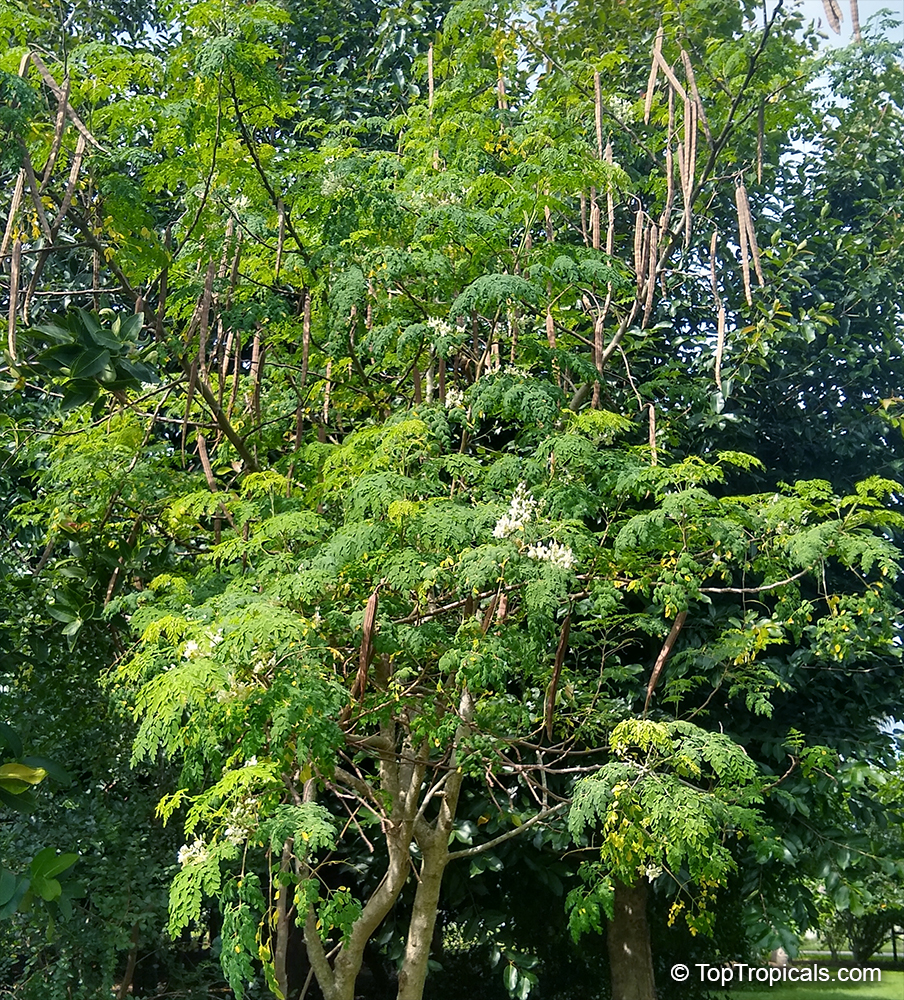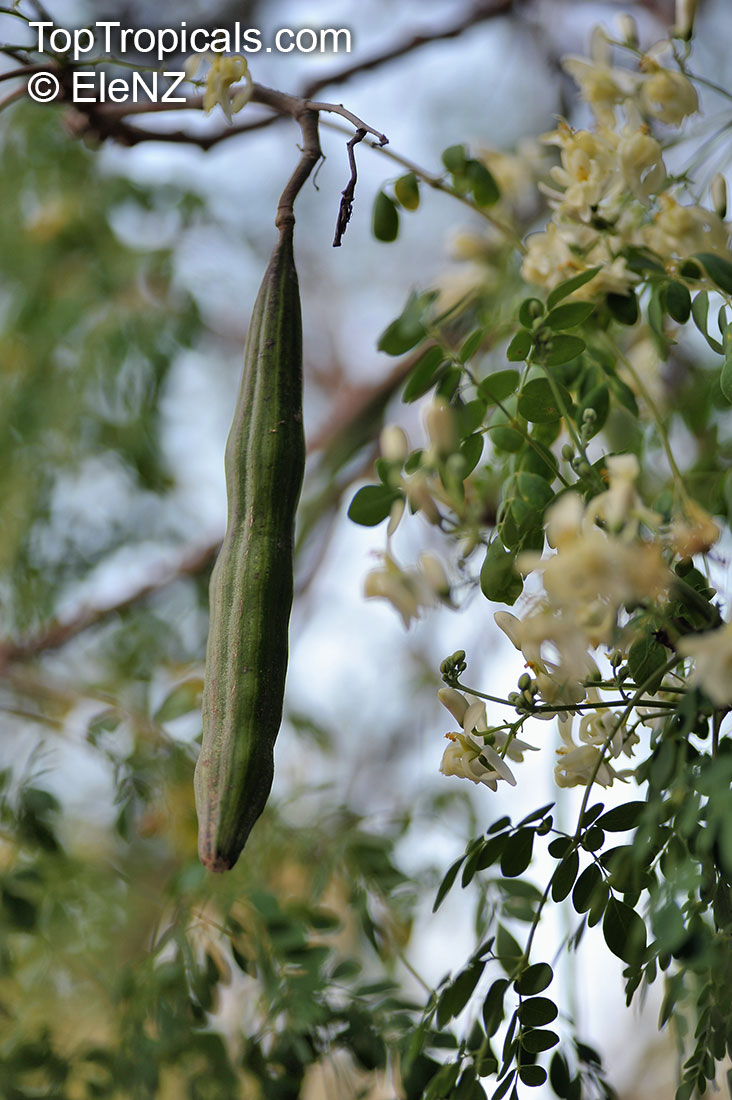Moringa oleifera (Horseradish tree)
Top Tropicals Plant Encyclopedia
Botanical names: Moringa oleifera, Moringa pterygosperma
Common names: Horseradish tree, Ben Oil Tree, Coatli, Drumstick tree, Bridal veil, Miracle Tree
Family: Moringaceae
Origin: Eastern India












This 25 foot tall tree is sometimes mistaken for a legume. It has delicate foliage and attractive pale white-yellow fragrant flowers that are borne in loose clusters in the leaf axils. Flowering and fruiting freely and continuously. Grows best on a dry sandy soil. Makes an ideal shade tree with high drought resistance. Possibly one of the most useful trees in the world, it produces long green pods that have been compared to a cross between peanuts and asparagus. The roots are used as a substitute for horseradish and the edible leaves make a highly nutritious vegetable. The roots have also been documented as useful in many folk remedies. The flowers, shoots, and foliage are edible as greens. The name derives from the roots, which taste like horseradish and are used as a substitute. Cattle are particularly fond of them. Young pods are cooked in curries. Seeds, which taste like peanuts when fried, are eaten, but they contain an alkaloid, which limits their use. The unripe pods, known as `susumber' or `drumsticks', are cut up and boiled like beans. The outsides of the pods are extremely hard and woody and impossible to eat; one has to pick them up and eat the sticky pulp inside and `pips' which are lightly hot and delicious. Upon pressing, the seeds yield an oil called ben oil. This nondrying oil is used for oiling machinery, in salad oil, and in soaps. The corky bark yields a gum used in India to print calico (cotton cloth with figured patterns).
Learn more about Moringa tree: How to grow a happy Moringa Tree
Similar plants: Moringa oleifera (Horseradish tree)
Recommended Fertilizer: SUNSHINE Robusta - Rapid Growth Booster
Ordering seeds info
RECOMMENDED SUPPLIES:
Seed Germination Mix #3, professional grade
SUNSHINE-Epi - Seeds and cuttings booster
SUNSHINE Bombino - Young Plant Booster
